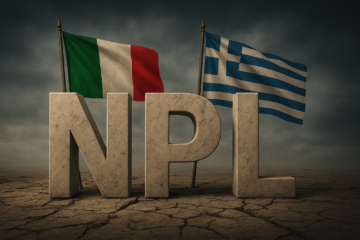Rio Tinto Plc; market cap (as of 10/10/2014): £55.42bn
Glencore Plc; market cap (as of 10/10/2014): £41.52bn
Rio Tinto, the England-based second-largest supplier of iron ore worldwide, has rejected a merger proposal from the smaller Switzerland-based rival Glencore, preventing a deal that would have created the largest player in mining and commodities globally. In fact, the giant’s market cap would have stood at $160bn, even larger than BHP Billiton, currently world’s biggest natural resources company, whose market cap stands at about $145bn.
In July 2014 Ivan Glasenberg, Glencore’s CEO, made a personal approach to the Rio Tinto Chairman Jan du Plessis. The matter was significant enough for the Chairman to take it to the Board discussion. However, the Board members did not consider the offer to be beneficial enough taking into account Rio Tinto’s stand-alone future potential value and, in order to hush up market’s rumors, it confirmed in a statement to the Australian stock exchange dated October 7, 2014 that “The Rio Tinto board […] concluded unanimously that a combination was not in the best interests of Rio Tinto’s shareholders”.
The deal, to be made stock-for-stock, made actually a lot of sense from Glencore’s standpoint. From a strategic point of view, iron ore is a business segment towards which Glencore has virtually no exposure and in the case the deal had gone through, Glencore would have combined its vast commodity-trading operations with Rio Tinto’s portfolio of iron-ore projects that feed demand for construction materials in China. Indeed, according to Citi, $500m cost-saving synergies could have been achieved from day one.
From a financial perspective, being Rio Tinto’s value heavily affected by iron ore price, shares of Rio Tinto have declined 12% this year in London following iron ore price hitting its five-year lows, in turn making the company more affordable. In fact, the cost of the steelmaking ingredient has plunged about 41% this year below $80 per ton due to an excess of giant mining projects and a relatively sluggish economic performance in China, the world’s biggest single market. In addition, Glencore would have inherited Rio Tinto’s dual listing structure – Rio Tinto is listed both in London and Australia – as well as Glencore would have been able to leverage Rio Tinto’s balance sheet, thus achieving significant debt synergies. Finally, Mr. Glasenberg may have been looking for a bigger role for himself such as running a combined company following the talks about the upcoming retirement of Samuel Walsh, CEO of Rio Tinto.
Given the above-mentioned iron ore market trend, it is obvious that Glencore is looking to close the deal as long as the iron ore price is depressed. However, securing a deal structure reflecting the long-term value of its assets, its iron ore business in particular, and not the current situation, is crucial for Rio Tinto. In fact, Chinese company Chinalco, which currently owns 9.8 percent of voting rights in Rio Tinto, is not eager to sell as it paid double the company’s current share price and it would demand a significant premium in order to sign off on a deal.
However, Glencore has already proven its appetite for growth through mergers and acquisitions. It made its way from a small commodity-trading house into a diversified global mining company. Glencore currently produces and trades a wide range of commodities ranging from copper and zinc to grains and cotton. In its trading portfolio it is only iron ore, which is missing. Its largest deal has been the $29bn acquisition of Xstrata, another mining company, in 2012. Also in April of the current year Glencore performed an acquisition of African oil producer Caracal Energy Inc. for $1.35bn. Given the past history of the company and its strive for external growth it is likely to expect some other deals coming if not with Rio Tinto.
[edmc id=1974]Download as PDF[/edmc]



0 Comments